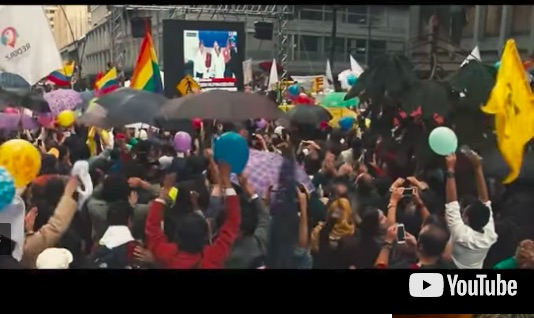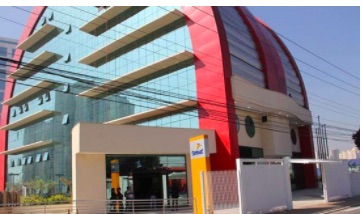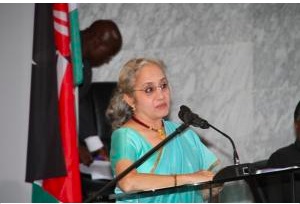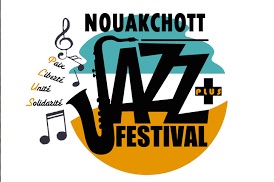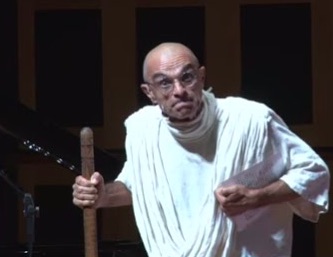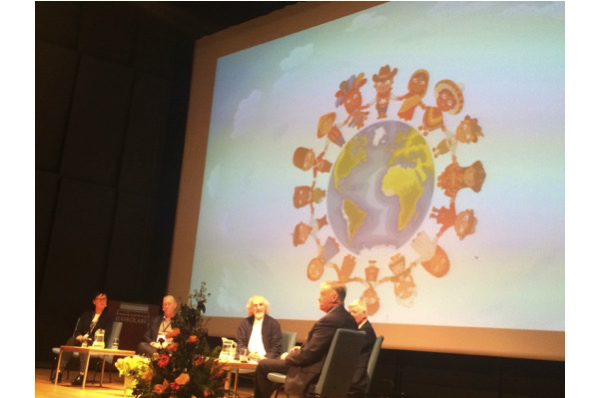… EDUCATION FOR PEACE …
An article from the International Civil Society Action Network published by Ms Magazine
Education is the reason extremists attacked Malala Yousafzai and other young girls in Pakistan. For extremists in the country, education threatens their very existence. Bushra Qadeem Hyder also understands the power of education. She is a driving force behind efforts to eradicate weapons and extremist ideologies in Pakistan.

Hyder is a pioneer in education—not only bringing the principles of peace education into her own school, but also integrating a comprehensive peace curriculum throughout an entire school system. Through Hyder’s peace education, pupils are exposed to the religious and cultural teachings of other communities, promoting understanding and acceptance.
Here she speaks of her journey of triumphs and challenges bringing up the next generation in a country saturated in conflict.
What does extremism look like to you?
Extremism, to me, is crossing your limits and imposing your views and values on others. In Pakistan, for the last decade, we have had extremism in different forms. It’s not just about terrorist attacks, but also the growing tendency for extreme ideas and ideologies. They have trickled into every level of society from the poor and less-educated to the highly educated elite. So for us it is a dual battle; we are not only fighting off the extremists who are training young people to become human bombs, but also struggling against a divided educated community.
What challenges and difficulties do you face as an educator and school headmistress?
For us as teachers, it is a bit difficult, because we are dealing with children who come from diverse backgrounds. They have discussions at home, they listen to their parents, and when they come to us, they are in a state of confusion: who exactly are the extremists? How do we know who they are? So as an educational institution it was a challenge to us, it was fighting the extremists who are killing people on the roads, and in the markets and in the mosques, and at the same time this educated class which were sending their children to us.
To complicate matters further, there are three parallel systems of education running in Pakistan: the government schools, private schools and madrasas (religious schools). All three follow different syllabi and totally contrasting teaching methodologies. They don’t mingle and each looks down upon the other.
They are doubtful of any change brought in the curriculum.
Changing the status quo and mindsets and talking about incorporating peace education on a national level is difficult. Confronting and challenging the views of the political parties is also a problem. Change is unacceptable and risky and no one is ready to take it.
How has this affected your line of work and sparked you to take action?
This drove me to initiate a peace education program within my own school, becoming the first in Pakistan which has peace education as part of the mainstream curriculum. Furthermore, I spread the word to other private institutions, and now I have five schools working with me; they have incorporated peace education as well.
I also introduced another unique combination of private schools. With the help of several organizations, I started involving private schools with the mainstream schools. We retrain their teachers, both the madrasa teachers and the private schools, and then we bring together the students of our private schools along with the madrasa institutions. Together they work on art competitions, peace theaters, debates, competitions and sports. These activities bridge the gaps between all these students. The gap is typically widest between the madrasa students and the private institution students. They consider each other as two different worlds, belonging to two different universes, and they don’t trust each other, because the communication gap is so enormous. But even with them, when they get together, they talk, they discuss and they find out that they are all the same.
What is the effect of the program on the students?
If you are new to my school, no matter to which country, or to which religion you belong, that won’t matter to my students. We would have a group of students welcoming you on the very first day. They would take you to class, introduce you, and all the students sitting there will welcome you. They would have a speech for you that you are welcome to our community. Among the students are peace agents who are trained in conflict resolutions and conflict transformation. On a small scale within their class, when there is a problem, they solve it on their own without going to the teachers. The new students are enrolled in a human rights class, with teachings on acceptance, regardless of religion and to which sect they belong.
You would never feel like a stranger, as it is not just the class but the entire schools gets to know there is someone new to welcome. This plants the seeds of acceptance and tolerance in them; if they welcome that person, they will become part of you and you will not develop either biases or hatred and won’t start fighting.
Have you heard from any of your students of some extreme cases?
Yes, we have seen extreme cases throughout the five years we have been running the programs. In my school, we have Christian students, we have Shia students, like Punjabis, we have students from different regions of Pakistan as well, and some of them have really extreme views about each other. They will say things like “he behaves like this because he is a Punjabi,” and that Shias are not Muslims. Initially it was difficult for us to manage, but now they have all understood that we are all God’s creations. He can create anybody in whichever way he wants to. So for us, the challenge as human beings is to respect that diversity. The same students who used to be against each other are now really good friends.
(continued in right column)
Question for this article:
Where is peace education taking place?
(continued from left column)
Why do you think it is hard for educational systems to incorporate peace curricula?
The first hurdle is that the majority of the people assume that education has nothing to do with extremism. Therefore they do not understand or see a need for peace curricula and how its presence in schools will make any difference to the overall security situation of the country. Secondly, everything in Pakistan is politicized, especially education. If anyone talks about interfaith harmony, equal rights and pluralism, the religious political parties term it as anti-Islam and hence educationists don’t take the risk of discussing peace curricula. Assertive advocacy for inclusion of peace education has never been undertaken. Lack of funding and disinterest of donors in this regard has been another hurdle.
Could you tell us a certain story or memory that touched you throughout your great work experience, be it with a child or teacher?
We started our peace education program in 2009. This was a time when our city Peshawar was witnessing daily bomb blasts. In my first peace education class with grade seven I discussed tolerance and forgiveness. One of the students was not agreeing that people should be forgiven. He was adamant that revenge must be taken only, and that can bring justice. I was trying to convince him with the help of Quranic verses and sayings of the Prophet but he stuck to his point. I knew the reason. His elder brother was a doctor in the army who had died recently in a Taliban attack. I took him to the office and talked to him. He shared with me that his mother refused to leave her room and had stopped talking and seeing people. She did not talk even to him or his siblings. She was taking medicine for depression that made her sleepy. The whole family was disturbed.
I got in touch with the child’s father and elder sister. We discussed the situation in detail. I asked them if there was a possibility of meeting the mother. They reluctantly promised to bring her to school. After three weeks she showed up with her daughter. During her first meeting she remained silent and only asked about her son’s behavior. This was an opportunity, so I told her he was not studying well and had become very aggressive. He fought with boys and argued with everyone. This information disturbed her. I asked her to come to school on a regular basis as that would help her son. She agreed.
After two days I received a phone call from the same mother. She asked about her son but I told her that he was behaving in the same way. This was an opportunity for me, so I told her about our peace education classes and invited her to come and have a class with the students. To my surprise, she accepted the offer. When she came to school I briefed her about our program and the topic I wanted her to discuss based on her personal experience.
The usual forty-minute class took an hour. I was anxiously waiting for her to come so that I could take her feedback. She came to my office after the class with a very mixed expression on her face. I was unable to read her thoughts. After a while, a smile appeared on her face, and she thanked me for giving her the opportunity to share her feelings and experiences and overcome her biases. That one class made her realize how important it was for elders to teach children about acceptance of diversity, forgiveness and tolerance. She became a regular visitor to school and conducted most of our peace education classes.
How would the world change if peace work was funded like militaries are?
I think the world will be a far better and more peaceful place if we invest less in military and invest more in peace education. If we invest more, if we train more teachers, if we train more students, within 10 years time I am sure that most of the conflicts that we have, and that we face on daily basis, will be overcome.
What assets do women bring to conflict resolution?
I believe women are more affected by the conflict. We have seen that throughout the world. I think it’s the mother, it’s the woman, who has responsibility and influence not only in her own house, but in the community as well. She thinks of everybody at large. So if women know more about what peace is, and how it could be brought about, I think it will be beneficial for the children whom she is raising. If women raise children on peace values, they teach them tolerance, they teach them acceptance, they teach them compassion, the same children will grow up into compassionate adults.
How has ICAN played a role in your journey?
ICAN gave me exposure, and a platform where I met so many women whom I was not aware were affected by conflicts and wars as much as I am. I made friends from Iraq, Yemen and Egypt, and then I came to know that we share the same stories and we have the same experiences. This gave me the opportunity to share my experiences with them as well, the way I’m handling conflicts in my country and the way I’m working with children. I have shared my materials with them because in some of these countries, which are all partners of ICAN, extremism is rising, especially among youth. Perhaps we have handled it in a positive way and now we can share our experiences with other women. This gives me more strength to move ahead.
What gives you hope for a better, less violent Pakistan?
We are a resilient nation and have overcome most of our troubles in an effective and positive manner. The increase in education, the enlightened youth and an active civil society is our hope for a less violent Pakistan.
International Civil Society Action Network is a U.S.-based nonprofit whose mission is to support civil society activism in promoting women’s rights, peace, and human security in countries affected by conflict, transition, and closed political space. ICAN aims to support women’s efforts through bridging the divisions between activists and the policy community, elevating the voices and experiences of women activists, building skills, and ensuring the exchange of knowledge and resources.
(Thank you to Janet Hudgins and the Global Campaign for Peace Education for pointing us to this article)
